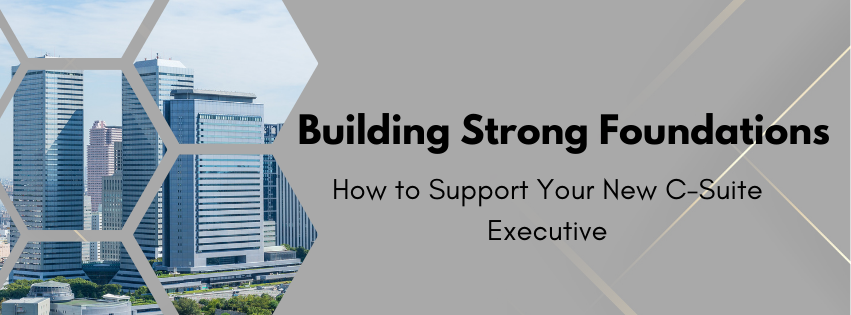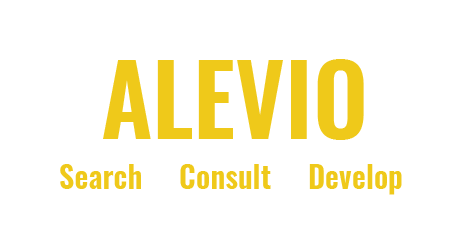
Supporting a new C-suite executive during their transition is vital for driving organizational success and fostering a culture of collaboration and innovation. An effective executive onboarding process lays the groundwork, introducing them to the company’s culture, values, and operational dynamics while setting clear expectations and performance metrics. Regular engagement with key stakeholders can build trust and provide the new leader with insights into the existing challenges and opportunities they will face. Tailored leadership development resources empower the executive with the necessary skills to lead with confidence. Establishing an inclusive environment that encourages open communication and feedback ensures that they feel valued and supported. By proactively facilitating a seamless C-suite transition, organizations can enhance employee engagement and unlock the full potential of their leadership.

Effective Executive Onboarding
Structured Onboarding Process
A structured onboarding process is essential for a smooth C-suite transition. It begins with a comprehensive introduction to the company’s culture, values, and strategic objectives. This foundation helps the new executive align their vision with the organizational goals. Setting clear expectations and performance metrics from the start ensures they understand what success looks like in their role. Including a schedule of regular check-ins can provide ongoing support and adjustments as needed. Additionally, facilitating meetings with key stakeholders early in the process helps build essential relationships and provides valuable insights into the company’s current challenges and opportunities. A well-planned executive onboarding process not only accelerates the new leader’s acclimation but also fosters a sense of belonging and purpose, ultimately driving organizational success.
Familiarization with Company Culture
Familiarizing a new C-suite executive with company culture is a critical component of effective executive onboarding. This process involves more than just an overview of the company’s mission and values; it requires an immersive introduction to the everyday practices and behaviors that define the organization’s unique environment. Encouraging participation in team meetings and informal gatherings can provide the executive with a firsthand experience of workplace dynamics.
Additionally, pairing them with a cultural mentor can offer insights into unwritten norms and help them navigate complex internal relationships. By understanding the subtleties of the company culture, the new leader can more effectively align their leadership style with the existing framework, fostering greater employee engagement. Furthermore, a deep appreciation of the organizational culture equips them to drive change and innovation while respecting and preserving core values. This alignment is essential for achieving long-term organizational success.
Establishing Clear Expectations
Establishing clear expectations is fundamental to the success of a new C-suite executive. From the outset, it’s crucial to define specific performance metrics and deliverables. This clarity helps the executive prioritize their efforts and align their strategies with the organization’s goals. Regular check-ins and performance reviews can offer ongoing feedback, ensuring that expectations are met and any necessary adjustments are made promptly. Additionally, transparency around the executive’s role in decision-making processes and their interaction with other leadership team members fosters a collaborative environment. Clear expectations also involve outlining the company’s short-term and long-term objectives, providing a roadmap for the executive to follow. This structured approach mitigates ambiguity, allowing the new leader to focus on driving organizational success. By setting and communicating clear expectations, companies can support their new executive in making informed decisions that enhance overall performance and employee engagement.

Building Strong Stakeholder Relationships
Regular Check-ins with Key Stakeholders
Regular check-ins with key stakeholders are vital for cultivating strong relationships and ensuring a seamless C-suite transition. These interactions provide the new executive with a comprehensive understanding of the company’s current landscape, including ongoing projects, challenges, and opportunities. Scheduling consistent one-on-one meetings with department heads and influential team members fosters open communication and builds trust. These discussions can reveal insights that are not always apparent in formal reports, allowing the executive to make more informed decisions. Moreover, regular check-ins create a platform for aligning expectations and ensuring that all parties are working towards common goals. By maintaining an ongoing dialogue, the new leader can demonstrate their commitment to collaboration and transparency, which is essential for driving organizational success. This proactive approach not only strengthens internal relationships but also enhances overall employee engagement, paving the way for a more cohesive and effective leadership team.
Understanding Challenges and Opportunities
Understanding the challenges and opportunities within the organization is essential for a new C-suite executive. Early identification of these factors enables the executive to craft strategic plans that are both realistic and ambitious. Engaging with key stakeholders through regular check-ins can provide valuable insights into the existing hurdles and potential areas for growth. Stakeholders can shed light on historical issues, current pain points, and untapped opportunities, offering a well-rounded perspective. Additionally, reviewing internal reports, market analyses, and performance metrics can further inform the executive’s understanding. This comprehensive view allows the new leader to prioritize initiatives that will have the most significant impact. By addressing challenges head-on and seizing opportunities for improvement, the C-suite executive can drive organizational success and foster a culture of innovation. Understanding these dynamics is crucial for making informed decisions that align with the company’s long-term objectives and enhance employee engagement.
Fostering Open Communication
Fostering open communication is critical for building robust stakeholder relationships and ensuring organizational success. A new C-suite executive can set the tone by actively promoting transparency and inclusivity from the outset. This involves creating channels through which employees at all levels feel comfortable sharing their ideas, concerns, and feedback. Regular town hall meetings, open-door policies, and anonymous feedback mechanisms can encourage a culture of openness. By valuing diverse perspectives, the executive can gain a deeper understanding of the organization’s pulse and foster a collaborative environment. Open communication also helps in quickly addressing issues before they escalate, thereby maintaining focus on strategic goals. Moreover, when employees see their inputs being acknowledged and acted upon, it boosts morale and enhances employee engagement. Ultimately, fostering open communication not only strengthens internal relationships but also equips the organization to adapt swiftly to changes and achieve long-term success.

Tailored Training and Development
Leadership Development Resources
Leadership development resources are essential for empowering a new C-suite executive to lead with confidence and effectiveness. Tailoring these resources to the specific needs of the executive and the organization can significantly enhance their impact. Comprehensive leadership programs can include executive coaching, mentorship opportunities, and access to leadership seminars or workshops. These resources not only help in refining the executive’s existing skills but also introduce new strategies for effective decision-making and team management. Additionally, providing access to industry-specific training can keep the executive abreast of the latest trends and innovations. Encouraging participation in peer networking groups can also offer valuable external perspectives and foster continuous learning. By investing in these leadership development resources, organizations demonstrate their commitment to the executive’s growth and success. This investment can yield long-term benefits, driving organizational success and fostering a culture of innovation and excellence.
Inclusive Environment Creation
Creating an inclusive environment is crucial for the success of a new C-suite executive and the organization as a whole. An inclusive workplace fosters diversity of thought and encourages collaboration across all levels. This begins with clear policies that promote equality and respect, ensuring that every employee feels valued and heard. Training programs on unconscious bias and cultural awareness can further support inclusivity. Encouraging diverse teams to work together on projects can lead to innovative solutions and enhance team dynamics. Additionally, establishing employee resource groups can provide support networks and promote understanding among different employee demographics. An inclusive environment not only boosts employee engagement but also leads to better decision-making and improved organizational performance. For a new executive, understanding and embracing inclusivity can help build trust and strengthen their leadership. By prioritizing an inclusive culture, organizations pave the way for sustainable growth and a more harmonious workplace.
Encouraging Feedback and Support
Encouraging feedback and support plays a vital role in the development of a new C-suite executive. Constructive feedback provides executives with critical insights into their performance and helps them identify areas for improvement. Establishing regular feedback loops, such as performance reviews and informal check-ins, can create a culture of continuous improvement. It’s important that feedback is a two-way street, allowing the executive to express their thoughts and concerns as well. This open dialogue fosters a supportive environment where challenges can be addressed collaboratively. Additionally, providing access to mentors or peer support groups can offer the new leader guidance and encouragement as they navigate their role. These support systems can help them feel more confident and connected to the organization. By promoting an environment where feedback and support are integral, organizations can enhance the executive’s effectiveness, drive their growth, and ultimately contribute to long-term organizational success.


